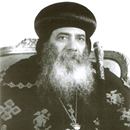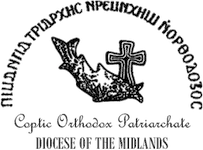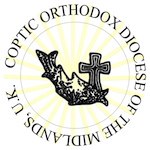
Monasticism in Egypt
I want to tell you now about Coptic monasticism. Egypt is considered the motherland of monasticism. The first monk in the whole world was St. Anthony, a Copt from Upper Egypt. He was born in the year 251 and departed in the year 356; he lived 105 years. During this period he established monasticism and all the leaders of monasticism in the whole world were his disciples or the disciples of his disciples.
Also, the first abbot in the world who established monasteries was St. Pakhoum (Pakhomius), also a Copt from Upper Egypt. He lived in the fourth century and at the end of the third century. When we say that St. Anthony was born in the year 251, that he became a monk when he was about twenty years old or less, and then spent the first thirty years in complete solitude, that means monasticism began in Egypt at the end of the third century or the beginning of the fourth century – more than sixteen centuries.
Monasticism began in Egypt as a life of complete solitude, a life of solitude and contemplation. No one of our monks in the fourth century or the fifth century served the church in the world. They wanted to forget the whole world and to be forgotten by the world and to have only our Lord God in their thinking, in their emotions, to fill all their hearts and all their lives.
So, when monasticism began it did not begin in monasteries, it began in caves scattered through the mountains, and holes in the ground, and some dwelling places. But afterwards, they began to build monasteries. Monasteries were built in the midst of the fourth century, or perhaps some years before. The monasteries of Upper Egypt, of St. Pakhoum, had many monks living in them, living together a life called in the Greek language, “kenobium”, or “cenobitic”, which means “life together.” And that was a characteristic of the monasteries of Upper Egypt of St. Pakhoum and St. Shenouda.
But in Wadi Natroun, the monasteries had a special characteristic. The monasteries were built in the most ancient places and had churches and the refectory. The monks used to go to the church once every week on Saturday evening to have a kind of spiritual teaching by the elders, with any question or problem being said by the monks – who were called brothers at that time – with the answers being given by the elders. They used to celebrate the Holy Communion on Sunday morning and then eat together in the refectory; then each monk would leave the monastery to live his own life of solitude until the next week. That means they used to gather together only once, one day every week, and live the rest of their lives in complete solitude. Why? They wanted to purify their minds from anything of worldly thinking, not to think of the world any longer, not to have news from the world, not to have letters from the world, not to read newspapers, even not to receive visitors.
But at last, this light of monasticism could not be hidden. Many people came from abroad to hear a word of benefit from those monks and these monks, the Coptic monks, the Egyptian monks, did not write about themselves, but the visitors who came wrote about them. One of the most famous was the Lausiac History by Palladius. It was called Lausiac History because it was written to a certain noble man named Lausius. This Lausiac History was translated into the English language with the title of “Paradise of the Fathers.” This “Paradise of the Fathers” was known in the Arabic language as “Bustan al-Ruhaban.” Another famous work was that of Rufinus about the desert fathers; another was by John Cassian who published two books, one called the “Institutes” and the other called “Conferences”. In his book, “Institutes” he had twelve chapters, the first four about the history of Coptic monasticism, the life of monks and their way of life, and the other eight chapters about spiritual warfare which may attack monks; for example, pride, vainglory, anger, and so on.
He said the traveler who passed from Alexandria to Luxor had, on all the journey, the sound of hymns in his ears from Alexandria to Luxor. That means all along the River Nile; but he was speaking about the western desert. In the eastern desert of the Nile Valley, we have two famous monasteries, the Monastery of St. Anthony and the Monastery of St. Paul the Hermit. Those hermits were also called, in monastic life, anchorites. Anchorites. In the Arabic language, they were called “as-Sawah”. They always used to live in caves very far from any monastery. When we read the story by St. Paphnutius who wrote for us the history or life of Abba Nofer, it was a trip of nearly thirty days in what was called the “inner wilderness”. They lived in a place quite unknown to anybody.
For example, St. Paul the Hermit lived about eighty years in monasticism and did not see the face of any human being. Many other hermits – for example St. Karas – lived about 60 years in monasticism without seeing the face of any human being. They forgot all about the world, they had nothing in their memory about the world or its news. Their senses could not collect any worldly matter, they had only God and His Love in their memory, in their mind, in their hearts, and in their emotions. They could fulfill the biblical verse which was written in Deuteronomy 6, and also was said by our Lord Jesus Christ in Matthew 21, “to love the Lord your God with all your heart, with all your mind, with all your soul, and with all your power.” How can a person give the whole of his mind to the Lord God? How? How to give the whole of your heart? We may love God through loving human beings, but those hermits, those anchorites, had only God in their minds. They could not think about any other matter.
Now, for example, when we speak to youth classes, we say to youth that bad thoughts are thoughts of any kind of sin; but for these monks, bad thoughts were thoughts of any matter besides God. For this reason, they were called “earthly angels”, or “angelic human beings”. They lived as angels on the earth, but as you know from biblical studies, we have two kinds of angels. (The first kind is) angels who live all of their time praising God: for example, the seraphim. Those angels of the seraphim are mentioned only in Isaiah 6; they always were singing “Agios, Agios, Agios” or “Holy, Holy, Holy”, praising the Lord. But we have another kind of angel that was mentioned in the Epistle to the Hebrews, chapter 1, verse 14. They are ministering spirits sent to those who are called for salvation. We can call the pastors of the church, the ministers of the church, angels sent to the world to serve the world of salvation; for example, the pastors of the seven churches in Asia were also called angels — the angel of Ephesus, the angel of Smyrna, the angel of Pergamos, and so on. But, the angels who devoted all their time praising the Lord as the seraphim were the symbol of holy life put in front of those monks.
St. Athanasius of Alexandria was chosen to be the 20th Pope of the See of St. Mark in the year 328 or 329, while he was only a deacon. At that time St. Anthony was living and was his spiritual father. But St. Anthony was not chosen to be the pope or patriarch; instead, they chose the deacon Athanasius. Through the flourishing era of monasticism of the fourth century, the fifth century, and the first half of the sixth century, they did not choose these monks to be bishops or patriarchs because those monks preferred to have a life of solitude, a life of prayer, a life of contemplation. They preferred to live with God, not with human beings. They preferred to be remembered only by God, not by human beings. Why? Because sometimes if they permitted visits they could lose their life of solitude and prayer, their prayers would be interrupted, and their meditation of God would be interrupted.
A story that was mentioned in the “Paradise of the Fathers” was that a certain monk was walking in the wilderness and two angels came beside him. He did not look to the right or to the left, but said, “I do not want even angels interrupting my meditation of God,” remembering what was in the Epistle to the Romans 8:38-39.
At last, the Church was in need of those people and then bishops were taken from among monks of the deserts and then patriarchs and then the great need of the Church was for some of them to work as priests, as pastors. Then the life of complete solitude became a minority in our monasteries. Remember two verses in the Bible; I do not know how you comment on these verses. The verse in St. Luke’s gospel, chapter 18, verse 1 (“And he spoke a parable unto them to this end, that men ought always to pray, and not to faint.”), and also another verse, “Pray without ceasing,” in the First Epistle to the Thessalonians, chapter 5, verse 17. Pray without ceasing, without interruption. How can we fulfill these verses?
We have to fulfill the symbol of Mary, not the symbol of Martha. The symbol of Martha is working for the service of God Himself; but for Mary, it is to be only looking at God, contemplation, prayer, to be at His own feet, listening to His words, and contemplating His words. So at least we should have a small number of these monks representing that life of the past and to be a blessing for the world and to bless the world. When our Lord God wanted to burn Sodom. He said even if I find only ten pure persons in the city, I will not burn the city. To have these persons only existing. He did not say if ten persons pray for this city – only that if there are only ten persons I will not burn the city. Those monks were a kind of blessing to the world representing pure life, the purest life in the whole world, resembling persons who don’t love anything in the world – even themselves – but only God to be kept in mind.
Now in Egypt we are trying to let monastic life return to many deserted monasteries. We had hundreds of monasteries in the past. We are now working in the White Monastery of St. Shenouda, in the Red Monastery in front of this white one, and in about four monasteries in the mountain of Akhmim, trying to send monks to this area to let monastic life return. If you come (to visit our monasteries), you will be deeply welcomed and you will see something about the ancient monastic life and the expansion of monasticism today. I myself, in only the single monastery of Anba Bishoy, ordained about 150 monks, new monks. For this reason, we had to build many new cells in the monasteries to receive those new novices who want to prepare themselves for monasticism. Also, in every monastery now we have a retreat house for those youth who want to come to the monastery to spend some days of spiritual experience under spiritual guidance. Some of them like monastic life and become monks.
We have great work in Sunday schools. In Sunday schools we prepare the children from the very beginning of their lives to live a spiritual life, to live in the Lord, some of these children join the seminary, some become Sunday school teachers, and some of those Sunday school teachers join the seminary. And when they graduate from the university and the seminary and Sunday school, they go to the monasteries to become monks – some of them – and some of them become parish priests. So, through the revival of Sunday schools we prepare a great number of persons to be monks. To live a spiritual life for their own benefit is all right; if the church needs some of them to serve, that is all right.
We don’t oblige any monk to lead a certain life. For he who wants to live in the monastery as part of the congregation, that is all right. If he wants to lead a life of solitude inside the monastery, that is all right. If he wants a cell of solitude outside the monastery or on the near hills, that will be all right. He who wants to live in a cave will have the permission to live in a cave. We have all kinds of monasticism.









